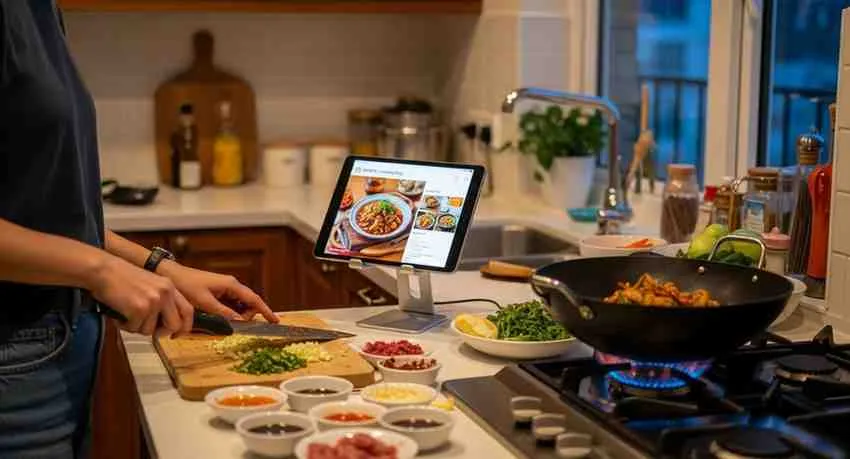Introduction: Why Chinese Cooking Blogs Are Your Gateway to Authentic Asian Cuisine
Have you ever wanted to recreate the incredible flavors of your favorite Chinese restaurant at home? Whether you’re craving hand-pulled noodles, perfectly balanced Kung Pao chicken, or delicate soup dumplings, Chinese cooking blogs have become invaluable resources for home cooks around the world. These digital culinary guides offer more than just recipes—they provide cultural context, technique tutorials, and the authentic wisdom passed down through generations.
In this comprehensive guide, we’ll explore the best Chinese cooking blogs available today, from those specializing in traditional Chinese dishes to modern interpretations that work beautifully in western kitchens. Whether you’re a complete beginner looking for easy home Chinese cooking guidance or an experienced chef seeking authentic Sichuan cuisine recipes, you’ll find the perfect blog to match your culinary journey.
What Makes a Great Chinese Food Blog?
Before diving into our top recommendations, let’s understand what separates exceptional Chinese recipe blogs from the rest.
Authenticity Meets Accessibility
The best Chinese food blogs strike a delicate balance between authenticity and practicality. They honor traditional cooking methods while acknowledging the realities of cooking in a western kitchen. These blogs don’t just share recipes—they explain the “why” behind techniques, helping you understand the cultural significance of dishes and the science behind flavor combinations.
Clear Instructions and Visual Guidance
Great Chinese cooking blogs provide step-by-step instructions accompanied by high-quality photos or videos. Since many Chinese cooking techniques differ from western methods, visual guidance becomes essential. Whether you’re learning to fold dumplings or master wok technique, clear visuals make the difference between success and frustration.
Ingredient Substitutions and Sourcing Tips
The most helpful blogs recognize that not everyone has access to Asian supermarkets. They offer practical substitution suggestions and explain where to find specialized ingredients, both online and in physical stores. This accessibility makes authentic Chinese food at home achievable for everyone.
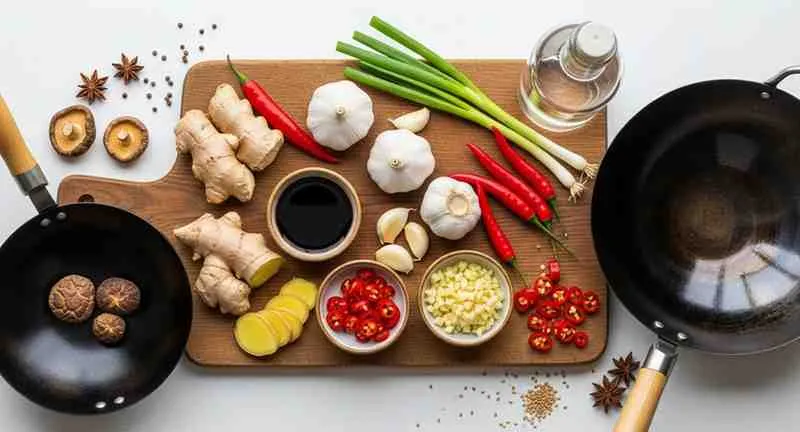
The Top Chinese Cooking Blogs You Need to Follow
1. The Woks of Life: A Family-Powered Culinary Journey
The Woks of Life stands as one of the most popular and comprehensive Chinese food blogs on the internet. Created by a Chinese-American family spanning three generations, this blog offers an authentic perspective on both traditional and modern Chinese cuisine.
What Makes It Special: The Leung family brings together the grandmother’s traditional knowledge, the parents’ immigrant experience, and the daughters’ American upbringing. This multi-generational approach creates recipes that honor tradition while adapting to contemporary kitchens. Their recipe collection spans regional Chinese cuisines, including Cantonese, Shanghainese, Sichuan, and more.
Best For: Home cooks seeking well-tested recipes with detailed instructions and cultural context. Their dumpling recipes and noodle dishes are particularly outstanding.
Standout Features: Comprehensive ingredient guides, technique tutorials, and a searchable database of over 1,000 recipes organized by region, ingredient, and dish type.
2. Red House Spice: Sichuan Cuisine Expertise
If you’re passionate about bold, spicy flavors and the distinctive taste of Sichuan peppercorns, Red House Spice should be your go-to resource. Created by Kathy, a Sichuan native living in the UK, this authentic Chinese food blog specializes in the fiery, numbing flavors that define Sichuan cuisine.
What Makes It Special: Kathy’s deep understanding of Sichuan cooking techniques and her ability to adapt them for western kitchens make her blog invaluable. She demystifies ingredients like doubanjiang (fermented bean paste) and explains how to achieve authentic mala (numbing-spicy) flavor profiles.
Best For: Adventurous cooks ready to explore regional Chinese cuisine, particularly those interested in authentic Sichuan food blog content.
Standout Features: Detailed ingredient spotlights, restaurant reviews in China, and recipes ranging from classic mapo tofu to lesser-known regional specialties.
3. Omnivore’s Cookbook: Modern Chinese Cooking Made Simple
Created by Maggie Zhu, a Beijing native now living in Austin, Texas, Omnivore’s Cookbook bridges the gap between authentic Chinese flavors and practical home cooking. Maggie’s approach focuses on making Chinese cuisine accessible without compromising on taste.
What Makes It Special: Maggie excels at creating streamlined recipes that deliver authentic results with minimal fuss. Her blog features excellent ingredient guides, including a comprehensive Chinese pantry essentials series that helps beginners stock their kitchens efficiently.
Best For: Busy home cooks wanting authentic flavors without spending hours in the kitchen. Also excellent for those new to Chinese cooking who need clear guidance on building a pantry.
Standout Features: One-pot meals, 30-minute recipes, and an outstanding collection of resources on Chinese ingredients and cooking equipment.
4. Khin’s Kitchen: Diverse Asian Cuisine with Chinese Specialties
While Khin’s Kitchen covers broader Asian cooking, it offers an impressive collection of Chinese recipes with a focus on home-style cooking. Khin, originally from Myanmar and raised in Hong Kong, brings a unique multicultural perspective to Asian cuisine.
What Makes It Special: Khin’s recipes emphasize comfort food and family-style dishes. Her blog excels at explaining cooking techniques in simple terms, making complex dishes approachable for beginners.
Best For: Home cooks interested in everyday Chinese meals rather than restaurant-style presentations. Her congee recipes and braised dishes are particularly comforting.
Standout Features: Focus on healing foods, seasonal cooking, and recipes passed down through family traditions.
5. China Sichuan Food: Regional Authenticity
Elaine Luo’s China Sichuan Food blog offers an authentic window into Chinese home cooking with a specialty in Sichuan dishes. As a native Sichuan cook, Elaine provides recipes that reflect how dishes are actually prepared in Chinese homes.
What Makes It Special: Elaine’s recipes maintain authenticity while offering helpful tips for adapting to ingredients available outside China. Her blog includes less commonly seen dishes alongside popular favorites, giving readers a deeper understanding of Chinese cuisine.
Best For: Cooks seeking genuine Chinese home cooking experiences and those wanting to expand beyond the standard Chinese-American restaurant repertoire.
Standout Features: Video tutorials, detailed technique explanations, and a focus on developing fundamental cooking skills.
Specialized Chinese Cooking Blogs for Specific Dietary Needs
Vegan and Vegetarian Chinese Food Blogs
Chinese cuisine offers incredible vegetarian options, from Buddhist temple food to vegetable-focused home cooking. Several blogs specialize in plant-based Chinese cooking:
The Plant-Based Wok and similar blogs demonstrate that Chinese cooking adapts beautifully to vegan diets. Traditional Buddhist vegetarian cooking techniques create deeply flavorful dishes without animal products. Many mainstream Chinese food blogs, including The Woks of Life and Omnivore’s Cookbook, offer extensive vegetarian and vegan sections with authentic recipes.
Look for blogs featuring:
- Tofu and tempeh preparations
- Vegetable stir-fries with authentic sauces
- Plant-based versions of classic dishes
- Buddhist temple-inspired recipes
Beginner-Friendly Chinese Recipe Blogs
Starting your Chinese cooking journey can feel overwhelming, but several blogs cater specifically to beginners:
Easy Chinese Food and similar beginner-focused blogs break down complex techniques into manageable steps. They often start with simple stir-fries and gradually introduce more advanced concepts like steaming, braising, and dumpling-making.
Key features for beginners include:
- Equipment guides starting with basics
- Recipes requiring minimal specialized ingredients
- Step-by-step photo tutorials
- Common mistake troubleshooting
Regional Chinese Cuisine: Exploring Beyond General Recipes
Chinese cuisine encompasses eight major culinary traditions, each with distinct characteristics. The best Chinese cooking blogs help readers understand these regional differences.
Cantonese Cooking Blogs
Cantonese cuisine emphasizes fresh ingredients, delicate flavors, and precise cooking techniques. Blogs specializing in this style focus on dim sum, roasted meats, and seafood preparations. The Woks of Life offers excellent Cantonese recipes reflecting the family’s heritage.
Sichuan Food Blogs
Sichuan cuisine deserves special attention for its complex, bold flavors. Beyond Red House Spice and China Sichuan Food, look for blogs that explain the layers of Sichuan cooking: the use of Sichuan peppercorns, fermented ingredients, and the balance of spicy, sour, and numbing flavors.
Northern Chinese Cuisine
Blogs covering northern Chinese cooking highlight wheat-based dishes, dumplings, and hearty winter fare. These recipes often feature more robust, savory flavors and emphasize noodles over rice.
Shanghai and Eastern Chinese Cooking
Shanghainese cuisine balances sweet and savory flavors, featuring braised dishes, soup dumplings (xiaolongbao), and fresh river seafood. Several Chinese recipe blogs dedicate sections to this refined regional style.
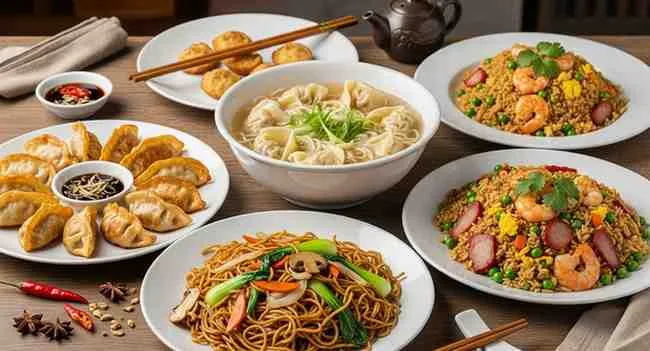
Essential Resources Found on the Best Chinese Cooking Blogs
Ingredient Guides and Pantry Essentials
Top Chinese food blogs provide comprehensive guides to essential ingredients. These resources help home cooks understand:
- Soy sauce varieties: Light, dark, and specialty types
- Vinegars: Rice vinegar, Chinkiang black vinegar, and their uses
- Oils: Peanut, sesame, and chili oil applications
- Fermented ingredients: Bean pastes, preserved vegetables, and fermented black beans
- Spices and aromatics: Star anise, Sichuan peppercorns, dried chilies, ginger, and scallions
- Noodles and wrappers: Different types and their specific uses
Technique Tutorials
The best blogs don’t just share recipes—they teach fundamental techniques:
- Wok cooking: Heat control, the “wok hei” (breath of the wok), and proper stirring techniques
- Knife skills: Chinese cleaver usage and various cutting styles
- Steaming: Using bamboo steamers and other steaming methods
- Dumpling folding: Different pleating styles for various dumpling types
- Braising: Low-and-slow cooking for tender, flavorful results
Equipment Recommendations
Quality Chinese cooking blogs guide readers through essential equipment:
- Woks: Carbon steel vs. non-stick, proper seasoning, and care
- Cleavers: Choosing and maintaining Chinese knives
- Steamers: Bamboo vs. metal options
- Rice cookers: When they’re worth the investment
- Specialty tools: Spider strainers, wok spatulas, and rolling pins
How to Use Chinese Cooking Blogs Effectively
Building Your Chinese Pantry
Start by following pantry guides from your chosen blogs. Most recommend beginning with:
- Core sauces: Soy sauce, oyster sauce, sesame oil
- Basic aromatics: Ginger, garlic, scallions
- Vinegar and wine: Rice vinegar and Shaoxing wine
- Cornstarch: For velveting meat and thickening sauces
Expand gradually based on the recipes you’re most excited to try.
Following Recipes Successfully
Chinese cooking often requires preparation before you start cooking (mise en place). The best blogs emphasize:
- Reading the entire recipe before starting
- Preparing all ingredients beforehand
- Understanding that many Chinese dishes cook quickly once you begin
- Not substituting without understanding flavor impacts
Engaging with Blog Communities
Many Chinese food blogs have active communities through:
- Comment sections: Where cooks share results and ask questions
- Social media: Instagram, Facebook, and Pinterest for inspiration
- Email newsletters: Regular updates with new recipes and tips
- YouTube channels: Video content for visual learners
Real-Life Success Stories: Learning from Chinese Cooking Blogs
Case Study 1: The Beginner’s Journey
Sarah, a college student with no Chinese cooking experience, started following Omnivore’s Cookbook. She began with simple fried rice and gradually progressed to dumplings. Within six months, she was confidently preparing multi-course Chinese dinners for friends. Her success came from following the blog’s systematic approach to building skills and pantry items progressively.
Case Study 2: Mastering Regional Cuisine
James, an experienced home cook, wanted to master Sichuan cooking. Through Red House Spice and China Sichuan Food, he learned to balance complex flavor profiles and source authentic ingredients online. Within a year, he was recreating restaurant-quality Sichuan dishes and understanding the regional variations within Sichuan province itself.
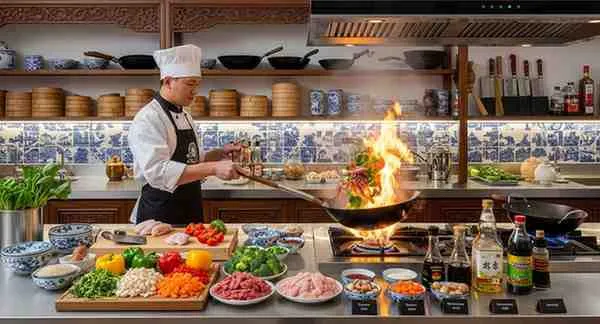
Case Study 3: Adapting for Dietary Restrictions
Maria needed to follow a plant-based diet but missed Chinese food. By following vegan recipes from multiple Chinese cooking blogs and learning ingredient substitution principles, she created a repertoire of satisfying vegan Chinese dishes. She discovered that traditional Chinese Buddhist vegetarian cooking offered incredible depth and variety.
Frequently Asked Questions About Chinese Cooking Blogs
What are the best Chinese cooking blogs for beginners?
The Woks of Life, Omnivore’s Cookbook, and Khin’s Kitchen are excellent starting points for beginners. They provide clear instructions, helpful ingredient guides, and recipes that build skills progressively. Start with simple stir-fries and fried rice before advancing to more complex dishes like dumplings or braised meats.
Which Chinese food blogs offer vegetarian or vegan recipes?
Most major Chinese cooking blogs include substantial vegetarian sections. The Woks of Life has an extensive vegetarian category, while Omnivore’s Cookbook regularly features plant-based options. For dedicated vegan Chinese cooking, search for blogs specifically focused on plant-based Asian cuisine or Buddhist vegetarian cooking.
What Chinese cooking blogs are good for authentic Sichuan recipes?
Red House Spice and China Sichuan Food are the premier destinations for authentic Sichuan cuisine recipes. Both are created by natives of Sichuan province who understand the regional cooking techniques and flavor profiles. They provide detailed explanations of key ingredients like doubanjiang and Sichuan peppercorns.
Where can I find recipes for specific regional Chinese cuisines?
The Woks of Life organizes recipes by region, making it easy to explore Cantonese, Shanghainese, Sichuan, and other regional styles. For deeper dives into specific regions, seek out blogs created by people from those areas. Many bloggers specify their regional background, which helps ensure authenticity.
How do I know if a Chinese cooking blog is authentic?
Look for blogs created by people with Chinese heritage who share family recipes and cultural context. Authentic blogs explain the “why” behind techniques, provide Chinese names for dishes (in characters or pinyin), and discuss regional variations. They also acknowledge when they’ve adapted recipes for western kitchens rather than claiming every recipe is “100% traditional.”
Can I learn Chinese cooking without access to Asian grocery stores?
Yes! The best Chinese cooking blogs provide ingredient substitutions and online shopping recommendations. Start with recipes that use widely available ingredients, then gradually expand your pantry through online retailers. Many Chinese ingredients are now available through Amazon and specialty online stores.
What equipment do I really need to start Chinese cooking?
You can start with standard western kitchen equipment: a large skillet or deep sauté pan, a sharp knife, and basic pots. As you progress, consider investing in a carbon steel wok, bamboo steamer, and Chinese cleaver. Quality Chinese cooking blogs guide you through equipment decisions based on your cooking frequency and budget.
Pros and Cons of Learning Chinese Cooking Through Blogs
Advantages of Chinese Cooking Blogs
Free and Accessible: Unlike cookbooks or cooking classes, blogs offer free access to thousands of recipes and techniques. You can browse at your own pace and save recipes that interest you.
Visual Learning: Most blogs include step-by-step photos or videos, making it easier to understand techniques that are difficult to describe in words alone.
Community Support: Active blog communities allow you to ask questions, share results, and learn from other home cooks’ experiences.
Regular Updates: Unlike static cookbooks, blogs continuously add new content, keeping up with trends and reader requests.
Search and Filter Functions: Digital formats allow you to search by ingredient, region, cooking method, or dietary restriction, making recipe discovery efficient.
Cultural Context: Many blog authors share personal stories, cultural traditions, and family histories alongside recipes, enriching your understanding of Chinese cuisine.
Potential Challenges
Recipe Quality Varies: Not all blogs maintain the same standards. Some recipes may be poorly tested or lack crucial details.
Overwhelming Choice: With so many blogs and recipes available, beginners might feel overwhelmed deciding where to start.
Requires Self-Discipline: Without a structured curriculum, you need to create your own learning path and stay motivated.
Screen in Kitchen: Following recipes on digital devices in the kitchen can be less convenient than physical cookbooks, though tablets and printouts help.
Advertising and Distractions: Some blogs have heavy advertising or lengthy stories before recipes, though most now include “jump to recipe” buttons.
Tips for Maximizing Your Learning from Chinese Cooking Blogs
Create a Systematic Approach
Rather than randomly trying recipes, develop a learning plan:
- Start with fundamentals: Master rice, basic stir-fries, and simple marinades
- Learn one technique deeply: Spend time perfecting stir-frying before moving to steaming
- Explore one region: Focus on Cantonese or Sichuan cuisine before branching out
- Progress gradually: Don’t attempt complex multi-step recipes until you’re comfortable with basics
Keep a Cooking Journal
Document your experiences with each recipe:
- What worked well
- What you’d adjust next time
- Ingredient substitutions you made
- Family feedback and preferences
This personal record becomes invaluable as you develop your Chinese cooking skills.
Engage with the Community
Don’t just read—participate:
- Leave comments with questions or results
- Share photos on social media using blog hashtags
- Subscribe to newsletters for regular inspiration
- Join associated Facebook groups or Discord communities
Cross-Reference Multiple Blogs
For important dishes or techniques, consult several blogs. Comparing approaches helps you understand:
- Which steps are essential vs. optional
- Regional or family variations
- Different adaptation strategies for western kitchens
- Common challenges and solutions
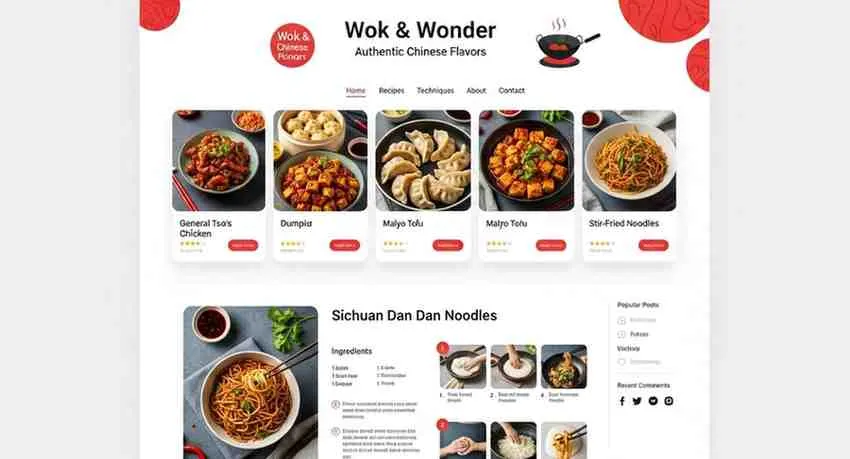
Beyond Recipes: Cultural Learning Through Chinese Cooking Blogs
The best Chinese food blogs offer more than cooking instructions—they provide windows into Chinese culture, history, and family traditions.
Understanding Chinese Food Philosophy
Many blogs explain concepts central to Chinese cooking:
- Balance: Yin and yang, hot and cold foods
- Five flavors: Sweet, sour, bitter, spicy, and salty
- Seasonal eating: Adjusting ingredients and preparations throughout the year
- Food as medicine: Traditional beliefs about food’s healing properties
Holiday and Celebration Foods
Learn about foods associated with Chinese festivals and celebrations:
- Chinese New Year: Dumplings, whole fish, spring rolls
- Mid-Autumn Festival: Mooncakes and seasonal dishes
- Dragon Boat Festival: Zongzi (sticky rice dumplings)
- Winter Solstice: Tangyuan (glutinous rice balls)
Understanding these cultural contexts enriches your cooking experience and appreciation for Chinese cuisine’s depth.
Regional Differences and History
Quality blogs explore how geography, climate, and history shaped regional cuisines:
- How coastal regions developed seafood specialties
- Why northern regions emphasize wheat over rice
- How trade routes influenced Sichuan’s spice culture
- The role of imperial courts in refining certain dishes
Building Your Chinese Cooking Blog Reading List
Creating a Balanced Collection
Rather than following just one blog, curate a collection that covers different strengths:
- One comprehensive blog: Like The Woks of Life for breadth
- One specialized blog: Such as Red House Spice for depth in a specific regional cuisine
- One beginner-focused blog: For clear, approachable recipes
- One technique-focused blog: That explains the science and method behind cooking
Organization Systems
Manage your recipe collection effectively:
Bookmark folders: Organize by cuisine region, dish type, or difficulty level
Recipe apps: Use apps like Paprika or Whisk to save and organize recipes from multiple blogs
Pinterest boards: Create private boards for recipes you want to try, organized by category
Printed favorites: Print and compile tested favorites in a personal cookbook
Staying Updated
Follow your favorite blogs across multiple platforms:
- Subscribe to email newsletters for new posts
- Follow on Instagram for visual inspiration and quick tips
- Watch YouTube channels for technique demonstrations
- Join Facebook groups for community engagement
The Future of Chinese Cooking Blogs
Chinese cooking blogs continue evolving, incorporating new technologies and responding to changing reader interests.
Video Content Integration
Many blogs now supplement written recipes with video content, offering visual learners step-by-step guidance. Short-form videos on Instagram Reels and TikTok make Chinese cooking techniques accessible to younger audiences.
Interactive Features
Modern blogs increasingly include:
- Recipe rating and review systems
- Customizable ingredient quantities
- Cooking mode (hands-free, voice-activated instructions)
- Meal planning tools
- Shopping list generators
Focus on Sustainability
Contemporary Chinese food blogs address sustainability by:
- Highlighting seasonal, local ingredients
- Providing zero-waste cooking tips
- Explaining traditional preservation methods
- Adapting recipes to reduce food waste
Fusion and Innovation
While maintaining respect for tradition, many blogs explore creative fusion and modern interpretations of classic dishes, reflecting how Chinese cuisine continues evolving in diaspora communities worldwide.
Conclusion: Your Chinese Cooking Journey Starts Here
Chinese cooking blogs have democratized access to authentic recipes and techniques, making it possible for anyone with internet access to learn this rich culinary tradition. Whether you’re drawn to the fiery complexity of Sichuan cuisine, the refined elegance of Cantonese cooking, or the comforting simplicity of home-style dishes, there’s a Chinese food blog perfectly suited to your interests and skill level.
The blogs highlighted in this guide—from The Woks of Life’s comprehensive family approach to Red House Spice’s Sichuan expertise—represent some of the best resources available for learning Chinese cooking. Each offers unique perspectives, tested recipes, and the cultural context that transforms cooking from mere recipe-following into genuine cultural appreciation.
Start your journey today by choosing one or two blogs that resonate with you. Begin with simple recipes that excite you, gradually build your pantry with essential ingredients, and don’t be afraid to ask questions in blog comments. The Chinese cooking blog community is welcoming, supportive, and passionate about sharing this incredible cuisine.
Remember, every accomplished Chinese home cook started as a beginner. With quality blogs as your guides, consistent practice, and willingness to learn, you’ll soon be creating delicious, authentic Chinese dishes that impress your family and friends while deepening your appreciation for one of the world’s great culinary traditions.
Ready to start cooking? Pick your first recipe from one of these amazing Chinese cooking blogs today, gather your ingredients, and begin your delicious journey into authentic Chinese cuisine!
Call to Action
Have you tried recipes from any of these Chinese cooking blogs? We’d love to hear about your experiences! Share your favorite Chinese food blog discoveries, successful recipes, or questions in the comments below. Don’t forget to bookmark this guide for reference as you explore the wonderful world of Chinese cooking.
Subscribe to our newsletter for more culinary guides, recipe recommendations, and cooking tips from around the world. Follow us on social media to see beautiful food photography and quick cooking tips that will inspire your next kitchen adventure!



